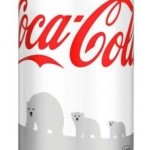Pay more attention to headlines in what you do.
Sure, you might be tempted to say “but I don’t write headlines in my work.”
Oh yes you do.
Ever find yourself needing to send an email but struggle to get readers to respond or to take some kind of action? Do you do analytical work that involves creating in-depth reports? Maybe you’re trying to find a stronger hook for your fundraising letter. Or maybe you’re looking at ways to get better at giving presentations that connect with people.
These are just a few examples where headlines can be valuable. We just don’t often think of them that way.
With email, we call it “coming up with a good subject line.” With reports and presentations, we ask ourselves “how can I cover all these complicated ideas in a way that doesn’t lose the reader?” See my point? Part of a headline’s power is its ability to compress an idea.
Sure, a great headline can attract attention (a practice that was alive and well 2,000 years ago in Rome when the first gazette, Acta Diurna, couched hard news with salacious stories).
But what they really do is give your reader a good reason to keep reading.
David Ogilvy—the true original MadMan of advertising—once said that “on the average, five times as many people read the headline as read the body copy. When you have written your headline, you have spent eighty cents out of your dollar.”
He wasn’t kidding about that last part. Even in my own work, I spend an inordinate amount of time crafting and refining headlines and subheadings, because it’s “the ticket on the meat” (another Ogilvyism).
Why does it matter so much? Because as I like to regularly remind: people are busy.
We live in a world now where the thing that is most scarce is audience attention.
You have to earn it and keep earning it. With that in mind, here’s what I know about how you can write better headlines that will help you keep earning those readers and find more homes for those ideas you want to share.
Make friends with action verbs
Cut out the fluffy features behind your idea until you’re left with a raw verb that describes what it can do for the reader (e.g., “Do…Grow…Make…Get…Take…Expand…”). It might not seem stylish to use them, but action verbs never get dull and they deliver the goods on answering that one question every reader has: “what’s in it for me to keep reading?”
Be more specific
Boring writing happens when you don’t know where you want the reader to look. As fiction writer Nancy Hale tells us: “The more specific you are, the more universal you are.” That applies to more than just fiction. Headline writing is compressed storytelling. And that’s something you can apply to any business. Find the glowing core in your story.
“How to” is your BFF
Veterans of advertising copy will tell you that you can’t write a bad headline that starts with “how to” (see what I did in the subject line of this email?) Granted, this is more relevant to email subject lines and presentation copy, but never say never when it comes to creating a surprising header even in dense analytical reports. I’ve seen it done.
But say no to link bait
You might think it’s tempting to mimic the linkbait strategies of Buzzfeed and others who peddle McContent (e.g., “You’ll never believe what happened next…” or “Seven ways to do X”). But don’t do it. That’s a race to the bottom and one that’s become so common now that readers are wise to the game. No amount of link baited traffic is going to erase the impression that you’ve snookered your audience into reading something that just wasn’t all that good or memorable. Your best ideas and your readers deserve better than that.
Do the unexpected
“State the opposite, not the obvious.” That’s what Sam Horn says in her book “Pop! Stand Out in Any Crowd.” Sometimes the best way to present an idea is to turn it inside out and say something that goes against conventional wisdom. Often that’s where real insight lives. Longtime CreativeBoost readers know that I’m quite fond of that particular strategy.
Yummy, tasty morsels
Break your ideas up into smaller ones. Assign a subheading to each one. Notice how I do that with by blog posts and newsletter? It’s a great way reward your readers for their attention and to honour their time. The trick is make it look like it’s not work to read things all the way though.
Hey, much like what you just did! See how that happened?


